By Sophie Charalambous, for Woodbine
On Sunday, June 16, during the seventh race at Woodbine, 6-year-old dark bay gelding Steak and Cheese took a sudden left turn into the temporary three-quarter pole after breaking from the gate, dropping jockey Fraser Aebly in the process.
The moments that followed were nothing short of intense.
Steak and Cheese continued galloping the opposite way of the ongoing race. The jockeys, zeroed in on the race at hand, tuned out the sound of the siren and completed the race.
Katy Crawford was one of the outriders who was positioned near the three-quarter pole. She and veteran pony Shiloh went to catch Steak and Cheese, but when she noticed Shiloh tiring, she called for backup on the radio. Fellow outrider and former jockey Steve Bahen was able to catch Steak and Cheese at the backside.
The gate crew attended to Aebly on the track. Aebly’s tests and X-rays came back clean, and he was able to be cleared and discharged from the hospital that night. Steak and Cheese was okay after the incident as well and has since run.
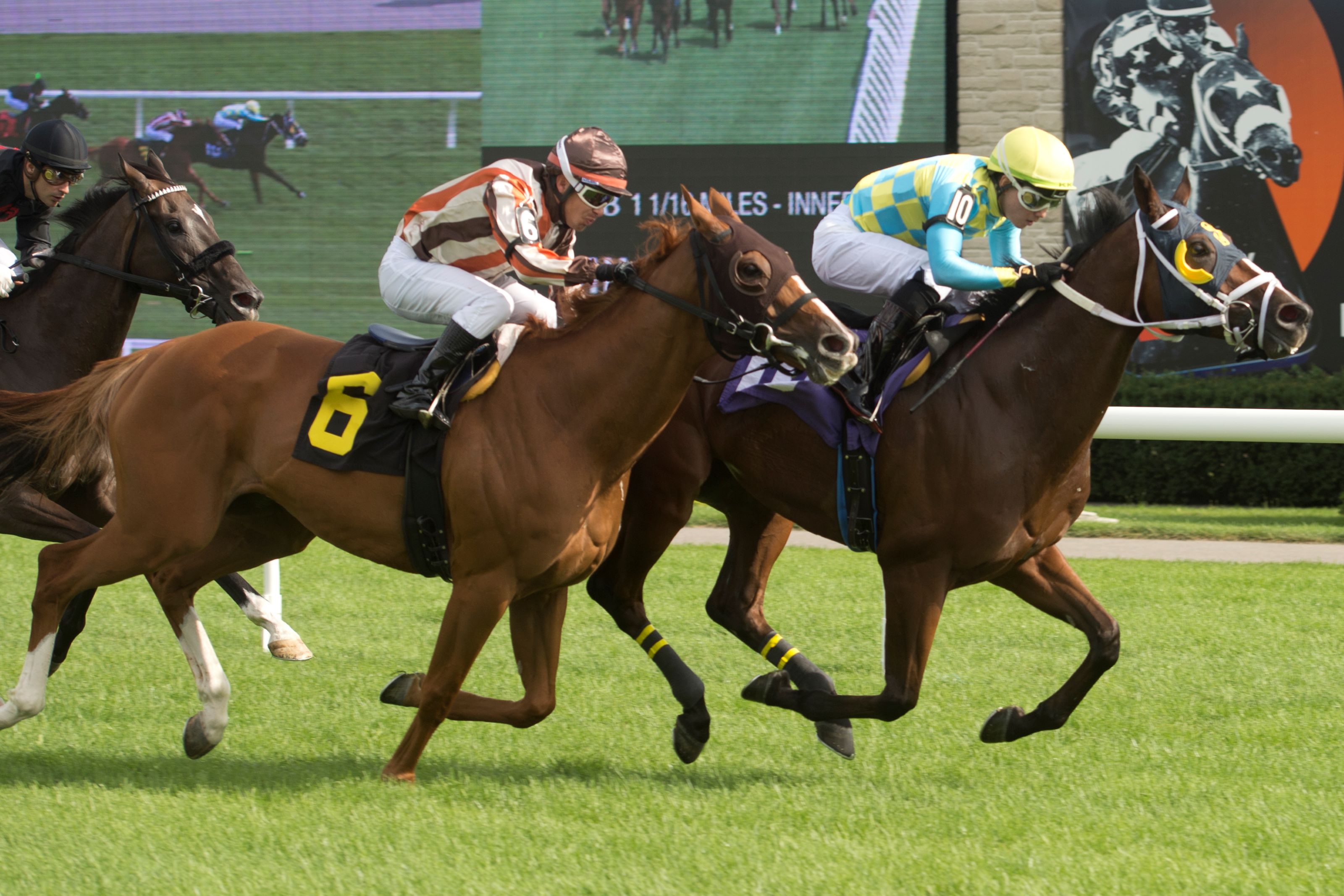
Safety first
At Woodbine, safety is the top priority and there are various measures in place for emergencies such as this. There are two ambulances on the track, and if there’s an incident on the racetrack a siren is sounded. There is an extra tractor on hand in case of an issue with the starting gate truck, and members of the gate crew follow the race in a vehicle so that if an incident happens, they will often be the first to assist.
Outriders are positioned during racing to ensure they can respond quickly to incidents. For races that are six furlongs to seven-eighths, there’s always one outrider sitting at the gate (where Crawford was sitting that particular day) and at the half-mile pole. In a two-turn race, there are always two outrides at the front side – one at the gate and one at the quarter pole – and one at the backstretch, at the five-eights pole. For races on the turf, there’s always one outrider at the gate and two on the backstretch.
Despite precautionary measures, you can’t always predict a racehorse’s behaviour. Speaking with various parties involved on the day of June 16, the consensus between stewards, outriders, gate crew, and the racing department is that years of experience and teamwork allowed the situation to be resolved safely.
A watchful eye
Ian Ross is the head starter at Woodbine at the starting gate. In this role, Ross and his crew constantly monitor the horses’ behaviour.
“Horses change, their attitudes change, so you have to be aware of every horse – how they’re behaving in the paddock so when they come on to the track, you have a good idea of what behaviour they’re like because horses can have good and bad days, like humans too. We’re so familiar with all the horses.”
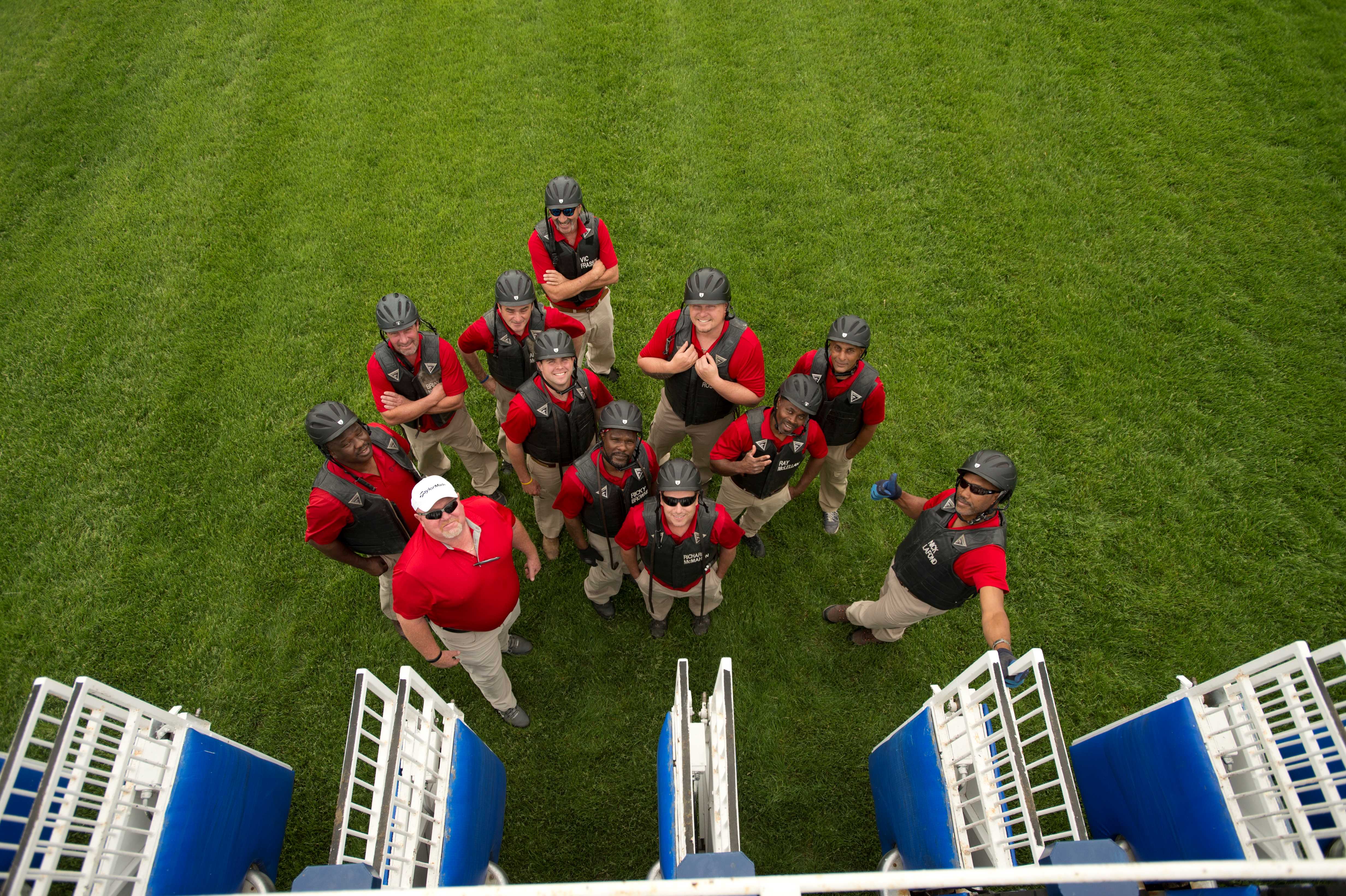
Ross recounts his experience on June 16 and how Steak and Cheese has been worked with to ensure that that behaviour doesn’t become a pattern.
“The horse left the gate then ducked the opposite way. That’s one of those things where that can happen in this business and who knows why that horse did that day. But what they did is bring that horse back and work with him on the gate in the morning and the quarter pole to make sure he doesn’t do that again. He has been perfect ever since. What Katy did was unbelievable.”
During that race, Ross and certain members of the gate crew attended to the jockey and helped assist EMS.
“The jock was good, but they had to do protocol with him to make sure that everyone’s safe.
“It was a freak accident where a horse did something he hadn’t done before. This can happen in this business. We’re making adjustments here at Woodbine, because it is tough to hear the siren. I was too busy protecting the rider, I didn’t really see what was going on with the horse. But everything that we did was put into place. I’ve experienced a lot of different scenarios and accidents over the years, and every time something happens, you learn from it.”
Ross describes the typical protocol for emergencies where his job is to help with EMS, assist the rider, and take care of the horses.
“We make sure that riders are stable. The paramedics get there and we’re there to assist and communicate to the team. I talk to the stewards, and the East Gate if we need outside EMS. I relay all the messages. I let everyone know what’s going on at that time.”
Ross praises the crew and the culture at Woodbine.
“One thing that’s good at Woodbine is we have a lot of good communications between when things happen. There are 20 million different things that can happen. It’s all about safety here at Woodbine and I deal with it here. We do our best. I don’t want to see anybody get hurt, I don’t want to see a horse get hurt. When you work with animals, they can be unpredictable. They’re Thoroughbreds, they’re athletes. A lot of them get pumped up. That’s where the horsemanship comes in, when you can see that in them. Their behaviour is telling you what they want to do. You have to be aware of these things. With things like this, you have to think quickly, move quickly, and be safe.”
Ross notes how crucial it is for the riders to trust in him and his crew, as well as how important communication is.
“All of our riders have the confidence and trust in me and our crew because we handle the horses. They know when I put a horse on that [gate schooling] list, if they ride it back, they know that horse will be good. It’s for the trainers and owners too because they want their horses good too, so we have to let them know if their horse is misbehaving.
It’s all about safety and for the betting public so we can have a nice, clean break. I always aim for a perfect start. We’re all close-knit. It’s very professional. It’s about working together. One thing I love about Woodbine is it’s all about safety here. If I need something, we go ahead and get it. We don’t put a price on safety.”
It takes a village
Martha Wakely, Senior Manager of Racing Operations, assists with various departments to ensure that the horses are on the track on time and safely.
“Stewards call all the shots, and we have to make sure that security is involved, EMS, if we need outside ambulances, making sure we talk to wagering if we’re going to have a delay on the track. The most important part for me is to be aware of what’s going on so I can go where they need.”
Wakely recalls her experience of Race 7.
“It unfolded so quickly. When [Aebly] came off the horse, I saw it and headed out front. By the time I got there, Katy had already averted the horse and avoided any kind of accident. The hats are off to her.
“What impressed me the most was listening on the radio, with all the adrenaline and everything happening, Katy had the wherewithal to radio that her horse was out of gas. She knew enough to pull up and let someone else take over. She did her part, which is most important, and she knew when to stop. I can’t say enough about what she did.”
Katy Crawford has been an outrider at Woodbine for almost seven years but has worked at Woodbine in various roles since 2002.
She describes her main role as an outrider as the safety of the horses and the riders.
“Anything four-legged or two-legged that’s on the track either in the morning or the afternoon, we are there to keep the peace and make sure everybody’s safe. If there are loose horses to catch them, if there are riders that are injured then to delegate whether an ambulance arrives. We’re in contact with various other key departments whether that be the gate crew, the stewards, the paddock, or the security. We’re all in conversation throughout the day to make sure that everything goes as smoothly as possible.”
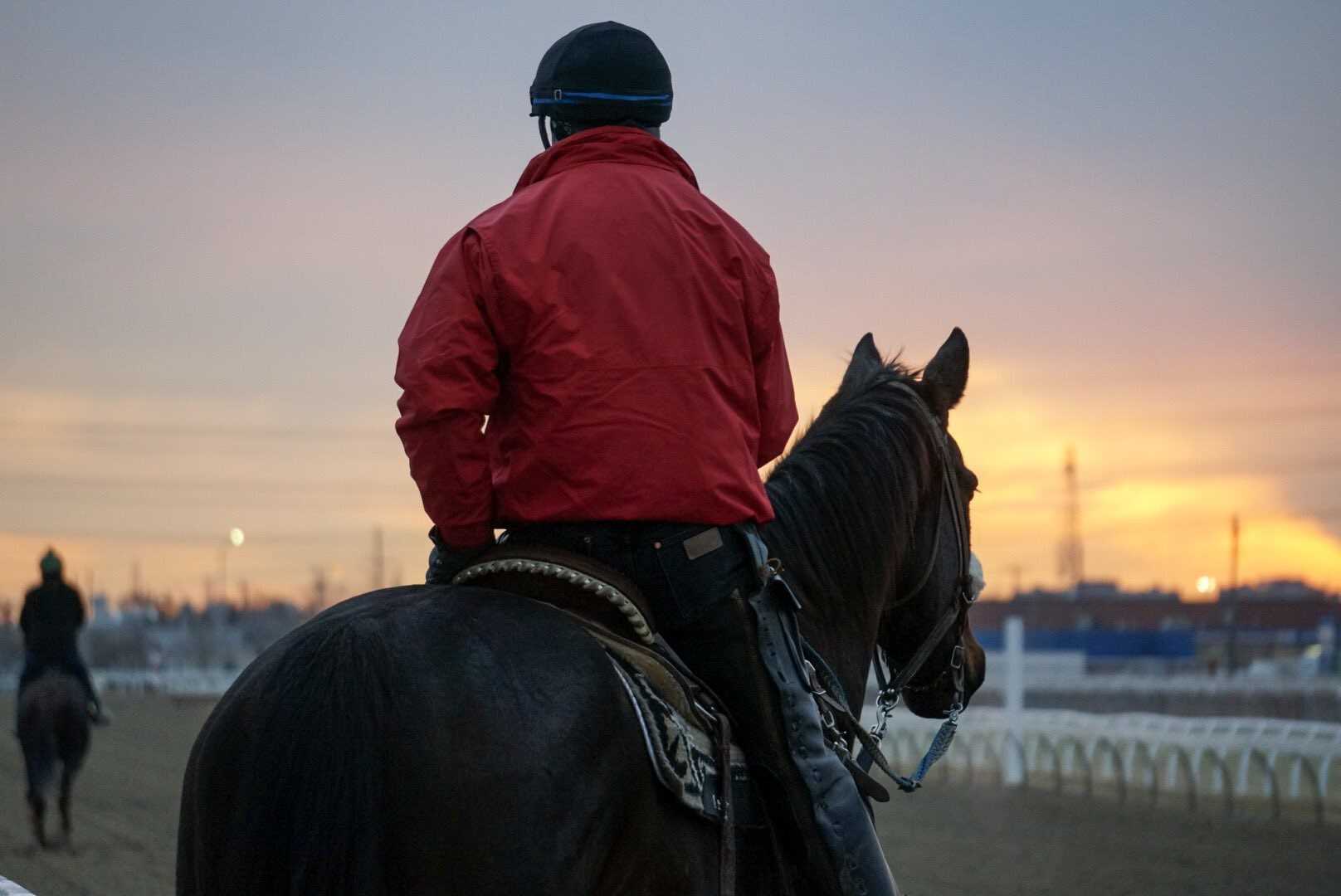
She remembers the day of the event.
“We have three outriders in the afternoon. I was sitting on the main track at the three-quarter pole. They have an extended rail that comes out to try to keep horses guided in that direction but that day it didn’t work in our favour. Steak and Cheese made a left-hand turn, and there wasn’t time to think. I was sitting on a veteran outrider horse named Shiloh and he’s 22. He’s phenomenal at his job but getting slower these days.
My only thought was; if I can’t catch him, no matter what happens, I have to get him off the inside fence, so I cut him off. I tried to run into him essentially to get him off the inside fence and it worked. But I couldn’t keep up with him, I couldn’t get close enough to him to actually grab him. All I could do is stay beside him and keep him from coming back to the inside fence where we then were coming towards everybody in the race. At the end of it, Stevie Bahen, who started outriding with us last year, and has been fantastic, caught Steak and Cheese on the backside. And that was it, they were already dealing with Fraser, and he was fortunately okay, and we all dodged a bullet.”
Commitment to safety
“There’s no textbook, a lot of it is learning from one incident to the next. Animals have minds of their own and the ability to do anything at any given time, there’s no way to really predict. Our setup in the morning and the afternoon is to cover all our bases from the years of history with experience. All you can do is learn from it and hope for the best the next time.
“We have a really great crew of outriders, the team’s been together for many years, there’s a lot of years of experience there. And that keeps things functional and safe. Everyone’s very diligent. A very solid aware group of people and that in itself makes things easier.”
Crawford shares how on race day, every racehorse is attended by an outrider whether that be in the paddock or in the post-parade.
“We all seem to know how to do our exact job at the exact time without getting in the way of the other. We help with anything even in the morning, if Ian’s having trouble with a horse in the gate or the afternoon, or in the paddock and Harold (Fortune, paddock judge) is having trouble with a horse who doesn’t want to saddle properly, then he’ll ask one of us to help with it. It takes a village and a team. There’s no way we could do the job without the radios because even the stewards, if there’s something going on, then they need to be aware of it and vice versa. They may see things quicker than we do. There are all those parts that come together at the right time.
“I give credit to the outriders as a whole, Woodbine, Martha, and the gate crew coming together that there needed to be something changed. The plan is to put lights on the poles on the inside of the track so if there’s something wrong and they need to stop. That’ll be huge for dealing with incidents going forward. We need a little extra oomph to go with it and I think we’re going to get that.”
Without warning
Aebly recounts Steak and Cheese’s actions.
“I’ve been on the horse plenty of times before and he never made any move like that with me. If he did give me a warning, I was not paying attention to that, he went for it. They’re animals and they’ll do what they want to do at the end of the day.
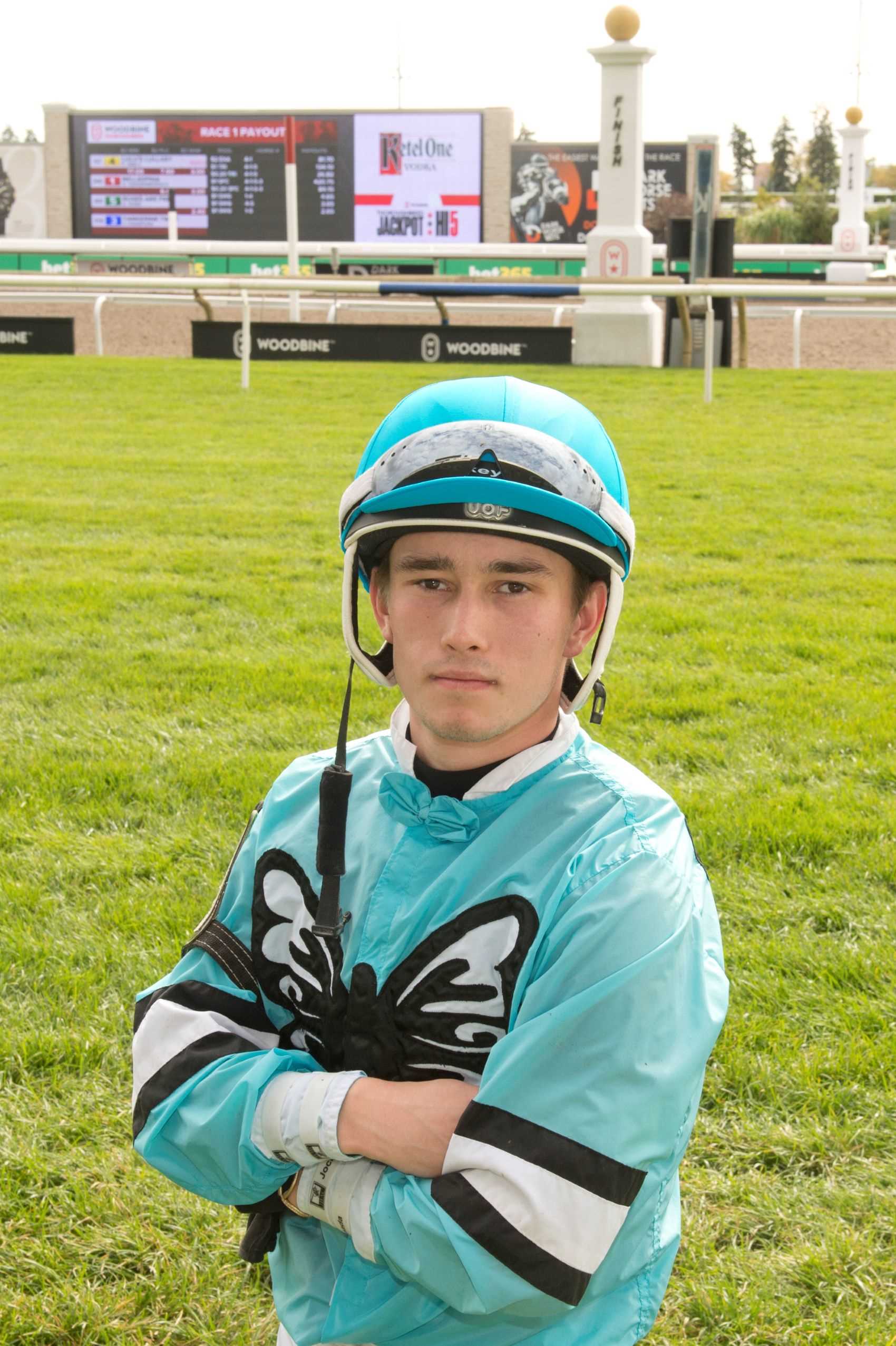
“I remember we broke well from the gate and the plan was to go to the lead. As soon as we passed the complete rail to the temporary rail, he just dropped over on me and went for it. I remember him going up from underneath me and I didn’t remember hitting the post for the temporary rail, I remember hitting the ground.
“There was a lot of support from my agent Gerry Olguin, he supported me a ton. Throughout, he was there with me at the hospital. Our Jockey’s Guild rep Darren Gomez spent a lot of time with me at the hospital.”
Aebly shares more about the general culture at Woodbine and the various support he receives from other departments.
“We work very closely with the gate crew – they do a very good job here at Woodbine. They’re first-hand and hands-on, they do a great job. It’s a really good place to ride. The gate crew does a great job, there’s a lot of good journeymen jocks for you to learn from and will help you out.”
The welfare of the horse
Gunnar Lindberg works at Woodbine but officially works as Senior Racing Official for the Alcohol and Gaming Commission of Ontario, which regulates horse racing in the province to ensure that all rules are followed.
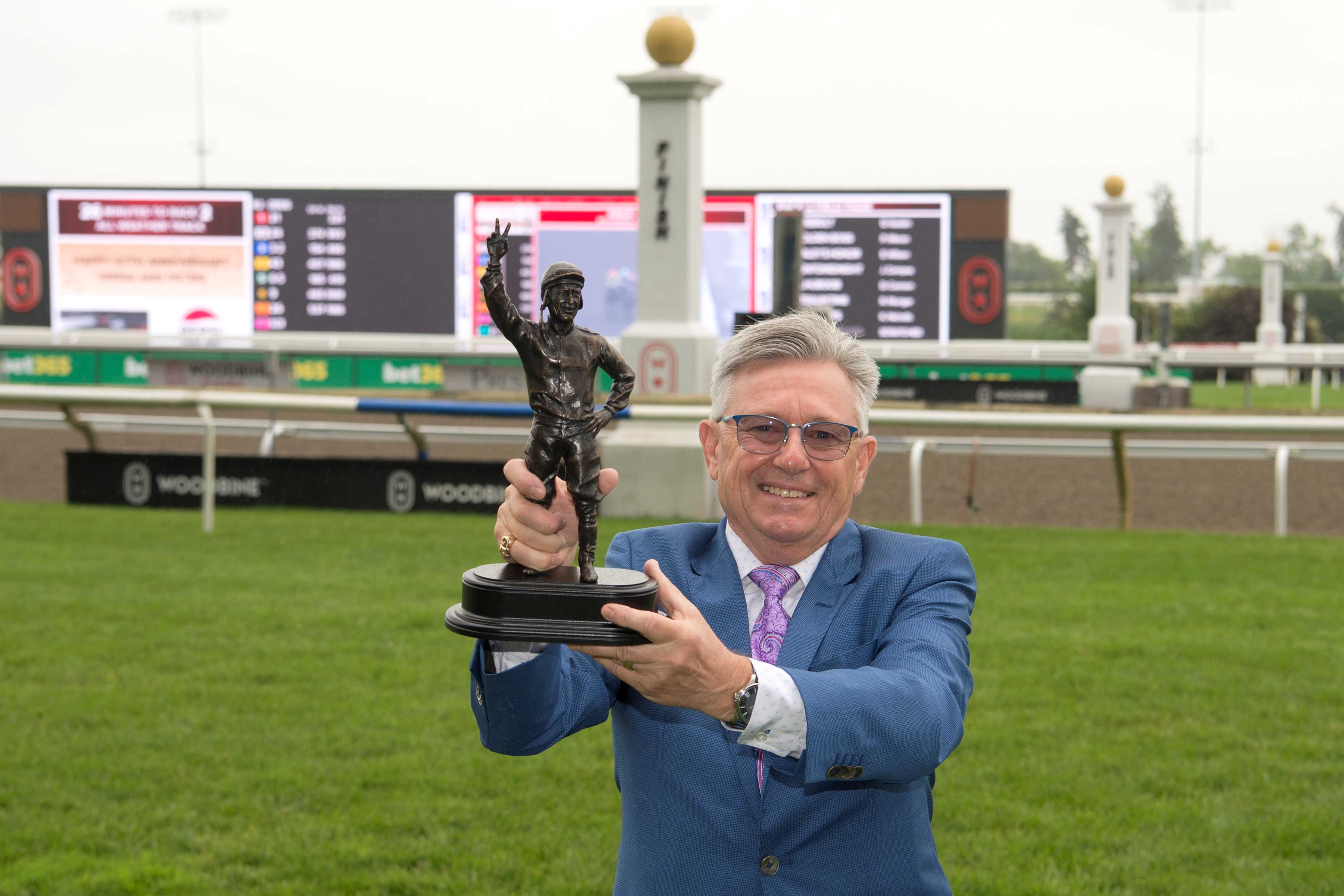
“This game is about the safety and welfare of the horses. In my role, it gives me an opportunity to uphold the integrity of the sport and the welfare and safety of the horses because they can’t speak for themselves. We deal with every group involved and we’re here to look out for the public to make sure that they’re given a fair shake. We want to ensure the integrity of the sport, it’s very important.”
On the day of the incident, Lindberg describes the various positions each of the stewards assumed.
“Jason (Portuondo) was on video. He’s watching to make sure that when the horses are leaving the gate, the doors are opening properly, and they all open at the same time. He’s also watching for any lateral movement of horses on that head-on shot. I was at the window watching through the binoculars checking that everything is clear, the race was performed properly, and we have the correct numbers on the board. Once we all make sure we have the right numbers up, then I will make it official with the placing judge and I will call the mutual department for them to be able to post the payouts. Kelly (Counsell) was on the window for test horses, so she was taking two test horses out of that race for urine and subsequent races.”
Game plan
To ensure that safety is upheld and that everything continues to be up-to-date and improved, Lindberg notes how every year there is a meeting to review how emergency situations are handled. Some participants include the stewards, outriders, gate crew, management, and EMS.
“As you saw the other day, we did everything we could to throw the siren on and unfortunately, the riders weren’t able to hear that siren. Other than training, it’s years of knowledge and experience because you never know what’s going to come up. Every time you think you’ve seen it all, you haven’t. And you saw the other day, that was something that we didn’t expect but everybody had a job to do. Everybody went to their stations and looked for the different things to make sure the outcome was a safe one.
“We had done everything that we were trained to do. We really wanted those riders to pull up at that point to avoid a catastrophe. Going forward, we’re going to make adjustments. I’ve ridden in big races in the States, I used to be in Maryland. I was in Pimlico on Preakness Day, and I rode for many years. And I can tell you from experience, when you’re in the heat of the moment in the middle of the pack, you don’t hear that crowd. I can understand those riders and we talked to them after.
“There’s no playbook, you just act. And I think that comes from years of experience just knowing that you have a problem and it’s instinctive.”
Lindberg shares the most rewarding part of his job.
“It’s being able to help look out for the welfare of the horses and make sure that this game is run properly, and everything is above board. That’s what we’re here for. I love the game, I’ve been in it now for most of my life, it’s been my life, and this is my 57th year of being on the racetrack. It’s been my life and my love. It’s the greatest game played outdoors.”
Staying ahead of the game
As a result of this incident, lights will be placed on the insides of the quarter poles that will alert jockeys of emergencies in addition to the siren.
“They’re putting these lights up now,” shares Ross. “So, they will go on as soon as something happens so the riders will know to pull up. I’m glad they’re doing that. They’re working on it right now. Anything we can do for safety. Being prepared for the unexpected is what it’s all about.”
Crawford and Lindberg point out that the outriders’ positions on the track will be changed to have an outrider stationed at the three-eighths pole, as well as for outriders to carry a flag in their saddle so that they can quickly catch the jockeys’ attention further up the track for the riders to pull up.
These additional safety measures are crucial. The fact that no one was seriously injured during Race 7 on June 16 is a testament to the fantastic job that the racing department, gate crew, outriders, and stewards did.
Each department had the safety tools and used their many years of experience to instantly act and work together amongst themselves.
Everyone had their own role to play and by acting with lightning speed and with each other, this ultimately ensured that a dangerous scenario like this one ended safely.
Sophie Charalambous, for Woodbine
The post How Teamwork Saved the Day appeared first on Woodbine Racetrack.






